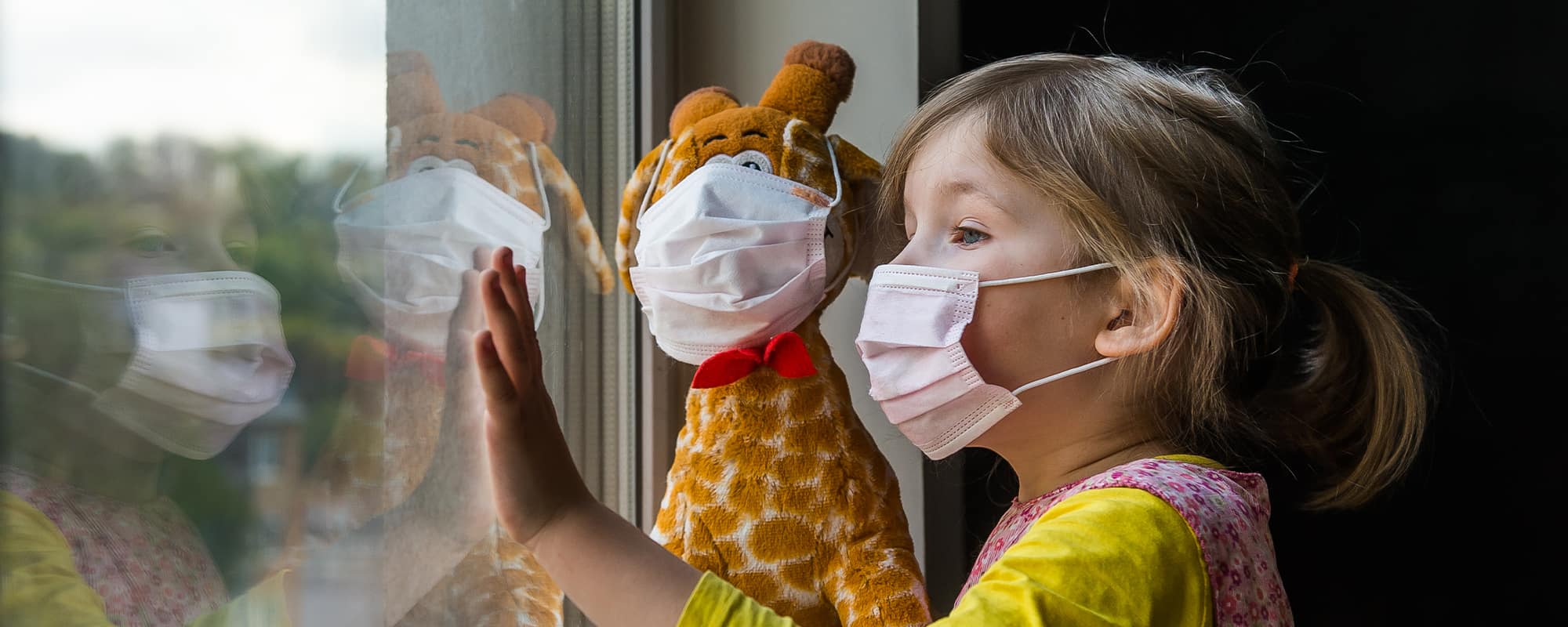Around the world, young children’s lives have been turned upside down due to the global pandemic, and parents and caregivers are looking for ways to give their children – and themselves – a sense of stability in this new “for now” normal.
Daily routines have changed for many families because of steps taken to prevent the spread of COVID-19. Snap lockdowns mean that your children are often staying at home instead of going to school or daycare, so their normal routines are interrupted. Even if you’re not affected by a lockdown, the flow-on effects of restrictions, closed borders, financial strain and negative messaging in the news can make it easy for everyone to feel overwhelmed by big feelings such as frustration, disappointment, worry, fear, and anger.
While change and transitions can be difficult, for young children, it’s important for them to be reassured that big feelings are okay and it’s a part of their daily lives as they navigate the world around them.
And as your child looks to you for guidance and comfort, this is a great opportunity for you to show them that, even in times of uncertainty, your family is in this together no matter what. And together you can practice how best to manage those big feelings so that they don’t interfere with daily activities.
Here are nine ways that you can help your child (and yourself) cope with the changes brought on by the pandemic, and build their resilience in this ‘normal for now’ world that we’re living in:
1. Take Care of Yourself
Try to find ways to reduce your own stress, because your child is observing and responding to your level of anxiety. It’s important to take care of yourself by drinking water, eating well, getting enough sleep, and taking restorative short breaks (a cup of tea or a walk to get fresh air). You can’t help others if you don’t take care of yourself, so be kind to yourself!
2. Provide Reassurance
You can assure children they are safe and cared for with hugs and simple, heartfelt phrases that name and validate their feelings: “I know you’re feeling (frustrated, disappointed, sad, angry) because lots of our routines have changed. But together we can calm the big feeling down and then think of some new special routines.” “Some things in our lives are different right now, but we’ll get through it together.” Remind yourself that this situation (and the way you feel right now) will not last forever.
3. Limit Exposure to Media
While it’s important to stay informed, an endless stream of headlines can increase your stress and anxiety, which children will pick up on. Try to limit the amount of information children see and hear by finding safe and entertaining activities for them while you get your news.
4. Model Healthy Ways of Coping
Children look to adults to see how they should feel and react – so, as much as possible, staying calm helps. Let children know that it’s okay to have many different feelings and thoughts, and that they can always talk to you about them. Validate their feelings and reassure them that they’re not alone, by saying “I get scared / worried / angry sometimes too”. Together, let’s calm down this feeling by taking deep belly breaths, focusing on another activity such as singing a favourite song, colouring, drawing, or take a sensory walk in the neighbourhood making observations of what you are seeing, hearing, or feeling (the sun on your face or the wind in your hair). Exercising together is a great way to calm down and reset. So, turn up the music and have a family dance party or perhaps even get the whole family in a game of freeze tag.
5. Belly Breathe
Breathing deeply and slowly is a calming strategy for anyone —anytime, anywhere. Ask your child to place their hands or a stuffed toy on their belly so they can feel / see their belly rise and fall with each breath. Model for your child and encourage them to take deep, slow breaths by breathing slowing in through their nose then breathing slowly out through their mouth to let the air out. Repeat three times —and your child will begin to feel calmer.
6. Routines Provide Structure and Comfort
Children always find comfort in the predictable and the familiar. Keep nap and bedtime routines the same if at all possible, maybe choosing one lullaby or story that they can look forward to. Remember, as you create your morning and evening routines, it’s okay to be flexible and change the order of some activities. What matters most is providing structure to your child’s day.
7. Watch Your Child Play!
Observe and listen—children under age seven often voice their thoughts as they play, cluing you in as to what is on their minds and giving you the chance to follow up with them later. It also helps to teach children positive ways to show or handle their “big feelings” by talking about them, reading stories and talking about the characters’ feelings, drawing pictures, or writing and acting out stories.
8. Take Shifts If You Can
When children are home from school and many parents trying to work from home, it’s a tricky balance. If possible, take turns spending time with your children, so that you can get the breaks you need to help children navigate these challenging times.
9. Finally—Look for Silver Linings
One benefit to being at home is having more family time. Children enjoy being with their parents — if we can manage our own big feelings and be present with our children as much as possible. These nurturing and fun times together are important bonding moments that strengthen our relationships with our children.
Also remember to take time for self-care, because when you look after yourself, you are better able to care for your child – and even a few minutes of “you time” can help you recharge so that you can parent at your best. Remember, you are doing a great job by doing the best you can.
A couple of tips for your own self-care include:
Stay (virtually) social: Spending more time at home than usual can take a toll. Reach out to loved ones and friends with a phone call or video chat. Keeping a social distance from others doesn’t mean you need to go it alone.
Take a ten-minute vacation: As you’re bathing your child, soak your hands in the warm water and give yourself a little massage, taking long deep breaths as you do so. Or take a break by listening to a favourite song, reading a few pages of a new book, or doing some energising stretches.
Sesame Workshop, the nonprofit educational organisation behind Sesame Street, launched Caring for Each Other not long after the pandemic began, with free resources designed to help parents and caregivers provide comfort and manage anxiety, as well as help with creating routines and fostering playful learning at home. Find out more at sesamestreet.org/caring
Learn more about the magic of Sesame Street and all of the good they are trying to bring to the world including their Caring for Each Other initiative by tuning into Episode 115 of the PakMag Parents Podcast with Dr Truglio joining Bree.





